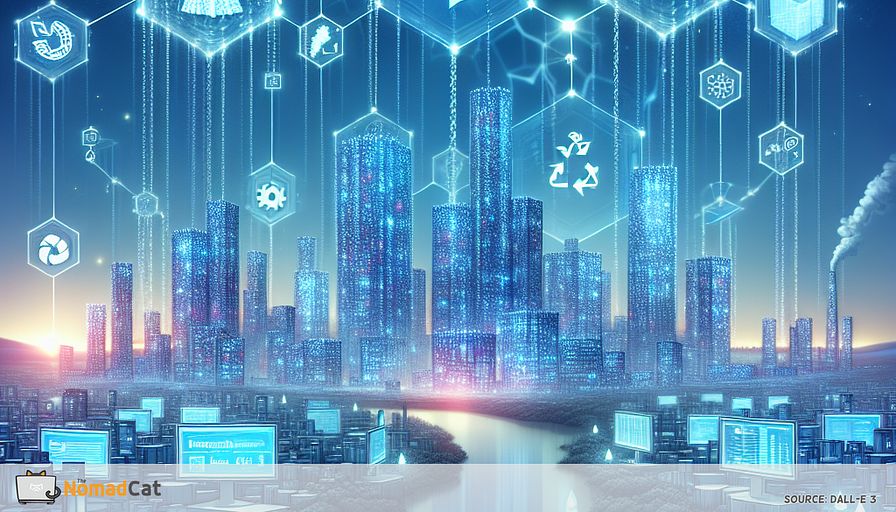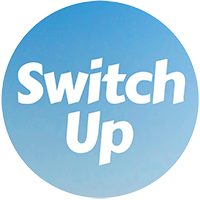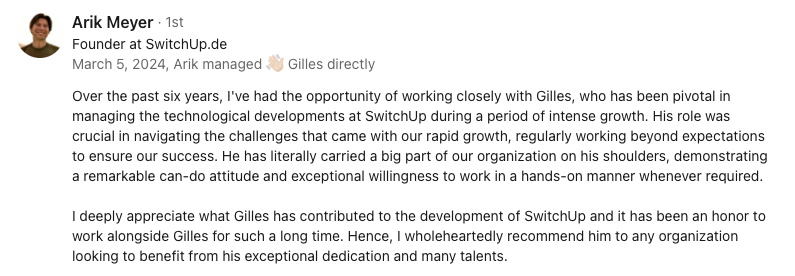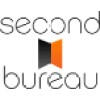Abstract:
The article discusses how blockchain technology is revolutionizing sustainability efforts by providing a transparent, verifiable way to track and certify environmental practices, thus ensuring businesses' green initiatives are credible and trustworthy. It highlights how European startups are at the forefront, using blockchain to enhance environmental transparency and accountability in various industries, such as fashion, food, and biofuels. Companies like CIRPASS, Provenance, Circularise, and Bioledger are pioneering efforts in lifecycle tracking, supply chain verification, and material tracing, fostering ethical sourcing and sustainable practices. The article also addresses blockchain's energy efficiency challenges, noting innovations like Proof of Stake mechanisms and energy-efficient solutions from startups like IOTA Foundation and Power Ledger. Blockchain not only aids in regulatory compliance with EU standards but also supports the development of circular economies and new markets for recycled goods. Despite technical and scalability challenges, significant opportunities for innovation and funding exist in the GreenTech space, with initiatives like Horizon Europe and the European Innovation Council backing such projects. Blockchain is transforming sustainability efforts into clear, provable actions, enhancing trust and transparency in the pursuit of a sustainable future.
Sustainability is more than just a trend now; businesses need to prove they're genuinely green. It's not just about cutting emissions or recycling; it's about proving these efforts work. Blockchain technology is stepping up to help with this. It provides a way to track and verify sustainability efforts, making sure they're real and trustworthy. Imagine being able to trace a product's entire journey from start to finish on a secure, unchangeable ledger. This isn't a future fantasy—it's happening today. In Europe, some companies are using blockchain to change how we view environmental transparency and sustainable business.
Blockchain and environmental transparency
With growing environmental awareness, blockchain tech is helping startups in Europe improve transparency in reporting their environmental impact. Businesses need to prove their green efforts and win stakeholder trust. Here's how blockchain can change environmental reporting for startups. Beyond sustainability, blockchain's impact is also seen in sectors like finance and healthcare, where it enhances security and efficiency.
Tracking sustainable practices
Tracking and verifying sustainability efforts
Businesses want to show they're sustainable, and blockchain helps track and verify these efforts. With blockchain's secure ledger, companies can log data about emissions and resource use safely. This makes sustainability claims reliable. Trust, like transparency, is crucial for a company's credibility in its sustainability journey. For instance, a European fashion brand uses blockchain to authenticate its supply chain, ensuring that each step, from raw material sourcing to production, adheres to eco-friendly standards.
Ethical sourcing and sustainability proof
Blockchain goes beyond just tracking. It helps prove ethical sourcing, which is a big deal in industries like fashion and food. By providing a secure record of a product's journey, blockchain meets the growing need for transparent supply chains. Smart contracts automate sustainability certifications, cutting out fraud and focusing on real eco-friendly practices.
Automating sustainability certifications
Smart contracts bring efficiency and security to blockchain. They streamline certification processes, reducing fraud risk and highlighting businesses truly dedicated to sustainability. This automation supports green initiatives and assures consumers they're backing genuine environmental efforts.
European startups leading the way
CIRPASS and lifecycle tracking
CIRPASS stands out in using blockchain to track product lifecycles, boosting transparency for better sustainable decisions. This empowers companies and consumers to make informed choices by understanding a product's full environmental impact.
Provenance and supply chain verification
Provenance shows how blockchain strengthens environmental reports through solid supply chain verification. With an unchangeable record of product origins, it ensures transparency and trust in environmental claims.
Circularise and material tracing
Circularise focuses on material tracing in supply chains. Using blockchain, it provides verified info, promoting sustainable practices and compliance with regulations. This is crucial as companies prioritize sustainability, balancing scalability with speed in their operations.
Bioledger and biofuel transparency
Bioledger is changing the biofuel industry by using blockchain for supply chain transparency and regulatory alignment. It provides accurate environmental data, helping companies meet regulations while promoting sustainability.
Energy efficiency in blockchain applications
Blockchain's energy use is a concern, but innovative solutions are emerging to tackle it.
Innovative consensus mechanisms
Proof of Stake (PoS) mechanisms are changing blockchain tech by cutting energy use compared to Proof of Work (PoW) systems. Ethereum's shift from PoW to PoS significantly reduces energy consumption, setting a standard in sustainability. A personal experience shared by a startup founder reveals how transitioning to PoS allowed them to cut down on energy costs while maintaining operational efficiency.
Case studies of energy-efficient solutions
Startups are using blockchain for energy-efficient solutions. The IOTA Foundation uses Tangle technology for IoT applications, while Power Ledger enables peer-to-peer energy trading, promoting renewable energy use.
Sustainable business models
Blockchain is not just changing business practices; it's enabling sustainable business models, promoting circular economies and new markets for recycled goods.
Circular economy models
Blockchain enhances supply chain transparency, crucial for circular economy models. Decentralized marketplaces powered by blockchain optimize resource use and reduce waste. This shift not only supports the environment but also resonates on a personal level, as businesses find new ways to connect with eco-conscious consumers.
New markets for recycled goods
Blockchain opens new opportunities for recycled goods markets. Circularise ensures supply chain transparency, boosting trust in recycled goods. Initiatives like The Waste Transformers and Recereum use blockchain to improve waste management and incentivize recycling.
Navigating EU environmental regulations
As the EU strengthens environmental regulations, blockchain helps simplify and enhance compliance across industries.
Blockchain for regulatory compliance
Blockchain transforms regulatory compliance with transparent records, aiding adherence to regulations like the EU Timber Regulation and EU Emissions Trading System standards.
Partnerships with regulatory bodies
Partnerships between startups and regulatory bodies foster blockchain solutions. Initiatives like IOTA's smart city projects and Energy Web's Origin platform highlight blockchain's role in supporting compliance and sustainability.
Challenges and opportunities
Blockchain in GreenTech offers challenges and opportunities:
- Scalability and technical challenges: Scalability and energy consumption are major issues. Layer 2 technologies and Proof of Stake networks are addressing these challenges by enhancing efficiency and reducing energy use.
- Opportunities for funding and innovation: Despite challenges, there's significant potential for innovation and funding in GreenTech blockchain. Programs like Horizon Europe and the European Innovation Council support projects integrating blockchain with sustainability.
Blockchain is turning sustainability efforts into clear, provable actions. By enabling tracking and verification of sustainable practices, it boosts trust and transparency. European companies are proving ethical sourcing and streamlining certifications with blockchain. It's opening new markets and supporting circular economies, moving beyond compliance to create a sustainable future.
You might be interested by these articles:
- Blockchain Technology in Securing Supply Chain
- Decentralized Identity Management Using Blockchain
- Enhancing Data Security with Blockchain
See also:
- Gilles Crofils: Skills, Industries and Markets
- Empowering Startups with Local 3D Printing Revolution
- Transforming Urban Spaces with Swarm Robotics
- Boosting Security for Remote Startups with EU Compliance
- AI's Role in Shaping Tomorrow's Jobs
- Ethical Considerations in NLP Applications
- Robotic Process Automation Implementation





